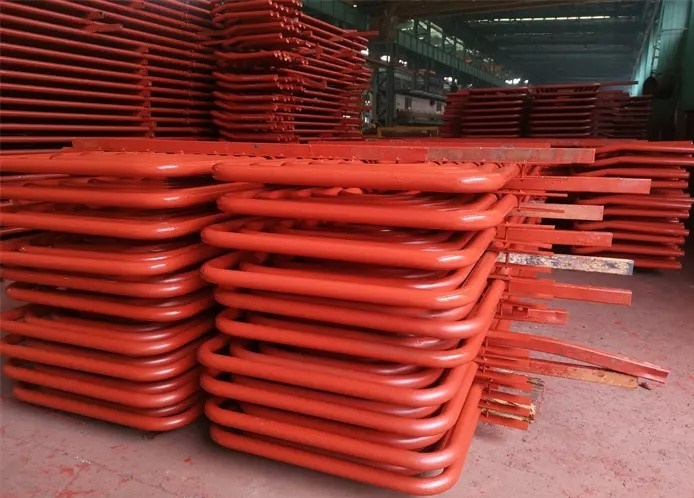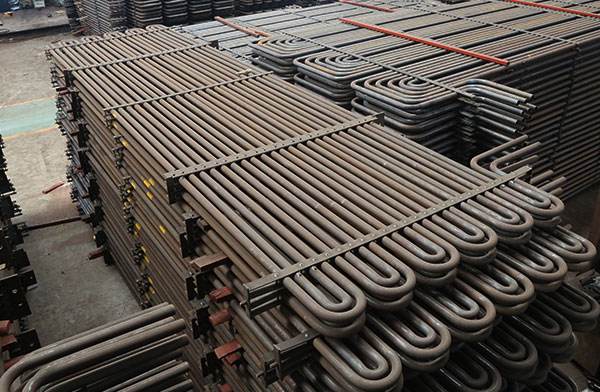Products Description
Serpentuator, serpentine tubes and S-shaped tubes
In the process of boiler production, almost all appliances are made of tubes. Some tubes are named as serpentine tubes because they are S-shaped.
Serpentuator, serpentine tubes, and S-shaped tubes all refer to a similar type of heat exchanger that consists of a series of curved or serpentine-like tubes. These tubes are designed to increase the surface area available for heat transfer between two fluids with different temperatures.
The term "serpentuator" is often used to describe a specific type of serpentine tube heat exchanger that is commonly used in power plants and other industrial applications. However, the terms "serpentine tubes" and "S-shaped tubes" are more general and can refer to a variety of different types of heat exchangers that use curved or serpentine-shaped tubes.
Overall, these types of heat exchangers are valued for their high efficiency and ability to handle high temperatures and pressures. They are commonly used in a variety of industrial applications where heat transfer is required, such as power generation, chemical processing, and oil refining.
The serpentine tube is mainly composed of tubes, connecting accessories and hanging devices. The components of the serpentine tube structure in the boiler generally include the boilers superheater, reheater, and economizer.
The serpentuator function in the superheater
The function of the superheater is to heat the saturated steam into a certain temperature of superheated steam. According to the different layout position and heat transfer method, the overheating is divided into the rear panel superheater, the final stage superheater, the vertical low temperature superheater and the horizontal low temperature superheater.
The reheater is generally used in high-pressure large-scale power station boilers. Its function is to return the steam that has done part of the work in the high-pressure cylinder of the steam turbine to the boiler for reheating, and then return it to the middle and low-pressure cylinders of the steam turbine to continue working. According to its heat transfer method and layout position, it is divided into wall radiant reheater, Rear panel reheater, final stage reheater, etc.
The economizer is installed in the flue at the end of the boiler, and its function is to use the delayed waste heat to heat the feed water, To achieve the purpose of saving fuel.
What is serpentuator?
A tube that is circuitous in a plane many times. The convection heating surface of the boiler, such as economizer, superheater and reheater, etc., the pass band mostly adopts the structure of serpentine tube, which can be arranged horizontally and vertically. The vertical serpentine tube is easy to accumulate water in the tube after the furnace is shut down, but it is convenient to support and hang. The longitudinal pitch of the serpentine tube is related to the radius of the bend, R, which is generally not less than 1.5 times the outer diameter to ensure the quality of the bend.
Serpentuator type
|
Type |
Advantages |
Disadvantages |
Supporting method |
|
Pendant-type |
1.Firm structural support |
1. Flow blockage by condensed steam 2. Needs slow restart to purge the water that accumulates in the bottom. |
supported from above |
|
Inverted-type |
1.Proper drainage of the condensed steam |
1. Lack the structural rigidity, especially in high speed gas flow |
Supported from below |
|
Horizontal -type |
1. Proper drainage |
1. They do not view the flam directly so they are mainly from the convective type |
Usually supported in the vertical gas ducts parallel to the main furnace. |
How the serpentuator work?
1. Superheating raises overall efficiency as well as avoids too much condensation in last stages of turbine which avoids blade erosion.
2. The heat of combustion gases from furnace is utilised for removal of moisture from steam and to superheat the steam.
3. Super-heaters ususlly have several tube circuits in parallel with one or more return bends,connected between headers.
4. Heat from the hot gases to the vapour in the surperheater is transferred at high temperatures.
5. Therefore promary section of superheater is arranged in counterflow and secondary section in parallel flow to reduce the temp. stressing of the tube wall.



